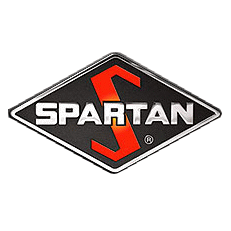CALL US TODAY · 440-439-7777
COMMON RV & MOTORHOME PROBLEMS
A Guide to Common RV Problems, Repairs, and Upgrades
The RV lifestyle provides freedom, flexibility, and the ability to enjoy life on your terms. However, owning and maintaining an RV can present a unique set of challenges. Like any home, RVs require regular maintenance, and problems can arise from time to time. Thankfully, with the right knowledge and skills, many common issues can be solved. Here are some of the most common RV and motorhome problems and how to get RV suspension upgrades for improved comfort.
Electrical System Issues
One common issue in RVs is electrical system failures. These can manifest as short circuits, blown fuses, or electrical surges that can damage appliances. If your RV has intermittent power, or some outlets and appliances aren't working, you may be facing an electrical issue.
There are several upgrades you can do to help mitigate these problems, such as installing surge protectors to safeguard your RV's electrical systems from power surges or getting an inverter to convert DC power to AC power, allowing you to use your standard appliances while on the road.
Leak Repairs
Leaks are one of the most common problems RV owners face. Leaks can originate from the roof, around windows, or in the plumbing system. Regular inspections of your RV can help you catch and repair leaks before they cause significant damage.
Air Conditioning Breakdowns
Air conditioning is a crucial component of RV life, particularly for those who travel in hot climates. Common problems with RV air conditioning systems include refrigerant leaks, dirty filters, and malfunctioning thermostats.
If you're frequently experiencing AC issues, consider upgrading to a more reliable, energy-efficient model. Installing additional fans can also help circulate cool air and reduce the load on your air conditioning unit.
Water Systems and Plumbing Troubles
The RV water system, including the freshwater supply, greywater, and blackwater tanks, can have several issues. These can range from leaks to clogs to faulty sensors. Regularly cleaning and inspecting your system can help catch problems early.
Consider upgrades like a better water pump for a more consistent water pressure or a tankless water heater for endless hot water. Additionally, high-quality tank sensors can provide more accurate readings of your tanks' status.
Brake Problems
Brake problems can be particularly dangerous in an RV. Some symptoms of brake problems include squealing or grinding sounds, vibrations, pulsations, or the vehicle pulling to one side when braking.
Brake problems typically require professional repair, but you can upgrade to higher-quality brake pads and rotors for improved performance and longevity. Regular inspections and maintenance can also prevent many brake problems.
Slide Out Not Functioning
A slide-out malfunction can significantly impact the livability of your RV. Common issues include the slide-out not extending or retracting fully or misalignment causing gaps and
leaks.
For upgrades, consider a slide-out support system to add extra stability and reduce wear on the slide-out mechanism. A slide-out awning can also protect the top of the slide-out from water and debris.
The Parts of an RV That are Easy to Replace
While some RV problems require professional help, if you are handy there are many parts that are relatively easy to replace yourself. These include filters (water, air, and fuel), light bulbs, fuses, and batteries. Also, simple fixtures like cabinet handles, drawer slides, and faucets are easy to upgrade or replace.
Seams and Windows
Seams and windows are common sources of leaks. During your regular RV inspection check the seams and if necessary apply a fresh sealant to help prevent many of leaks.
Upgrading to double-pane windows can provide better insulation and reduce condensation. If leaks around windows persist, consider replacing the entire window frame.
Canopies and Awnings
Canopies and awnings can be prone to damage from wind, sun, and debris. Regular cleaning and inspection can extend their lifespan.
Consider upgrading to a more durable fabric or a motorized model for easier deployment and retraction. For added protection, a canopy cover can shield your awning from the elements when not in use.
Lights
RV lights, both interior and exterior, can frequently burn out or become dim. LED lights are an easy upgrade that offers better energy efficiency and longevity than traditional incandescent bulbs.
Tips for Simple Repairs
For simple repairs, arm yourself with a good set of tools and a comprehensive repair manual. Always turn off power or water when working on electrical or plumbing repairs. Remember, patience is key - it's better to take your time and do the job right than rush and potentially cause more damage.
Find the Best Mechanic
For complex issues, a professional RV mechanic is necessary. Look for mechanics with RV-specific knowledge and positive customer reviews. Ask for recommendations from fellow RVers or in online RV communities.
Research and Read as Much as Possible
Educate yourself about your RV and its systems. The more you know, the better equipped you'll be to diagnose and fix problems. There are many resources available, including RV maintenance books, online forums, and YouTube videos.
| RV PROBLEM | SYMPTOMS | POSSIBLE CAUSE |
|---|---|---|
| Bottoming Out | With this condition, the suspension will travel to the lowest point, contacting the suspension stops. | Insufficient spring tension, Worn shock absorbers, Overloading vehicle |
| Bounce | Excessive vehicle bounce is a condition that may occur in both the front and rear of your vehicle. | Worn or defective shock absorbers or springs |
| Bump Steer | This condition occurs when the vehicle hits a bump in the road and the steering wheel suddenly jerks to one side on its own. | Suspension geometry incorrect. Possible issues with linkage, ride height or shock absorbers |
| Delayed Steering Response | This condition occurs when the driver moves the steering wheel to the left or right, but there is little or no immediate response. | Linkage, suspension, rear axle side shaft, steering gear, trac bar |
| Dog Tracking | This condition occurs when the rear wheels are out of alignment (not pointing at the same angle as the front wheels), pushing the back end of the vehicle to one side or the other. | Alignment, rear end thrust, body mounts, loose trac bar |
| Harsh Ride | This is a condition as the name implies when you have a real stiff ride feeling every crack, rut or bump in the road. | Tire pressure, shock absorbers, ride height, excessive spring rate |
| Listing | This is a condition where the vehicle is not riding level being lower on one side than the other | Improper weight distribution, worn springs, body mounts, spring hangers, bushings |
| Porpoising | This is a condition where the coach will make a teeter-totter movement (front-to-back) in response to a bump in the road | Shocks, ride height, weights, motion control units |
| Pull | This is a condition where your vehicle wants to move to the left or right on its own. | Alignment, tires, power steering, weights side to side, improperly adjusted steering controls |
| Returnability | In this condition after a turn is made, the steering does not come back to center as it should. | Steering gear linkage, ball joints, alignment, king pins |
| Road Wander | This is a condition where your vehicle moves to the left or right even when the driver is steering straight. | Linkage, tire wear, alignment, weight distribution, trac bars |
| Rut Tracking | In this condition the vehicle follows ridges or grooves worn into the road | Linkage, suspension, alignment, tires, trac bars |
| Shimmy | This condition occurs when the vehicle goes over a bump and the steering wheel then shakes or shimmies back and forth. | Linkage, suspension, alignment, tires, steering, dampeners |
| Steering Play | This is a condition where when the driver move the steering wheel there is little or no immediate response. | Linkage (including steering gear), bell crank, trac bar, loose or worn suspension |
| Sway | This is a condition where the vehicle sways or rocks from side-to-side. | Sway bars, ride height, trac bars, motion control units, shock absorbers, springs |
| Tail Wagging the Dog | This is a condition where you steer the wheel back and forth and it feels like being steered from the rear of the vehicle instead of the front. | Rear axle shift, trac bars, weight distribution |
| Wind Drift | This is a condition also known as sway where your vehicle will rock from side-to-side when from wind currents or winds created by passing vehicles | Sway bars, ride height, trac bars, motion control units, shock absorbers, springs |
Other Helpful Information for Motorhome & RV Owners
We're Here to Help
Got a Motorhome or RV Question?
MAINLINE TRUCK, TRAILER & RV
Ohio's Premier Service Center for:
- RV & Motorhome Repair & Maintenance
- All Trucks & Trailers










